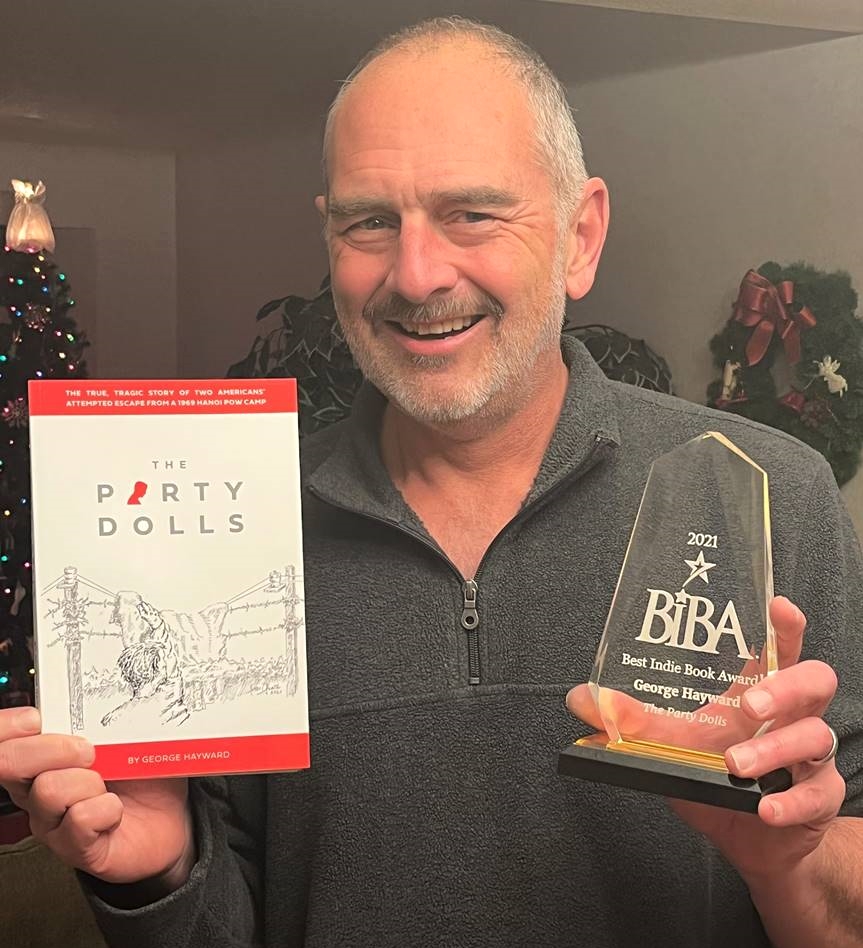- By David Bitton david.bitton@gazette.com
- Feb 6, 2022
As a young Air Force public affairs sergeant in 1990, George Hayward learned firsthand accounts of Americans tortured in North Vietnamese prisons and a little-known story of escape.
The telling came from retired Col. William Baugh, a civilian public affairs chief Hayward served under at Falcon Air Force Base— now Schriever Space Force Base — east of Colorado Springs.
Baugh was shot down in an F-4 while bombing a railroad east of Hanoi on Jan. 21, 1967. He would spend more than six years as a prisoner of war alongside many other Air Force fighter pilots.
An essential conflict in “The Party Dolls,” a book by Hayward, surrounds the Code of Conduct for American POWs, and in particular, Articles III and IV, which butted heads. Article III stated, “If I am captured, I will continue to resist by all means available. I will make every effort to escape and aid others to escape. I will accept neither parole nor special favors from the enemy.” While part of article IV read, “If I become a prisoner of war, I will keep faith with my fellow prisoners. I will give no information or take part in any action which might be harmful to my comrades.”
Hayward interviewed nine former POWs between 1995 and 2002. Their voices and remembrances drive the book and move the story forward.
Captains John Dramesi and Ed Atterberry escaped on May 10, 1969, with help from their fellow prisoners, only to be captured within a day. Planning the escape and waiting for the right opportunity took more than a year. Many in the Hanoi prison known as The Annex didn’t want an attempted escape to occur, saying that it wouldn’t work and that those left behind would be punished. Both proved to be true.
“It’s a story of incredible bravery against the longest of odds, and of bitter conflict,” Hayward said.
The North Vietnamese segregated prisoners by rank, with mostly Air Force captains and Navy lieutenants (equal rank) — pilots and aircrew — housed in The Annex.
The Annex had six identical buildings that were divided in half by a thick wall. Each cell was roughly 18 by 20 feet and housed as many as nine prisoners. Those interviewed for “The Party Dolls” were in Room 6 and 5, which shared a wall. Dramesi was one of the six interviewed from Room 6. Atterberry died shortly after being captured and his voice isn’t included in the book. Navy Lt. John “Mike” McGrath and Air Force Capt. Konrad “Konnie” Trautman are the two voices included from Room 5.
“Konnie Trautman is pivotal in the entire story because he was the senior ranking officer” and “essential in command of all the POWs,” Hayward said. “The fact that they were right next door, there was more direct communication between the two cells, plus they (Dramesi and Atterberry) couldn’t escape without his approval, made them critical elements to the story. Every room had a designated note writer, the person who could write clearest and neatest for scribbling on toilet paper. Mike McGrath happened to be Room 5’s guy. Therefore, when Troutman would say we need to send a note to Room 6, McGrath was the one that wrote it. So, the two of them really had key insights into the whole process. Their insights weren’t just hearsay.”
McGrath — who lives in Monument and wrote the book “Prisoner of War: 6 years in Hanoi” — served more than 24 years after graduating from the Naval Academy. The then Navy lieutenant was shot down flying his 179th mission, in June 1967. He arrived at The Annex via the infamous Hanoi Hilton where many fighter pilots were tortured for years.
“Everybody thought it was a bad idea to try to escape,” said McGrath, who was imprisoned for five years, eight months.
“Dramesi really wanted to escape and used the third rule of conduct. Konrad didn’t support it,” McGrath said.
As the senior officer in charge, Trautman was seeing his third war. He enlisted in the Army Air Corps in 1945, months before World War II ended. He earned a commission in the Air Force and his pilot wings in 1950. He flew more than 100 missions during the Korean War and was shot down on his 62nd mission of the Vietnam War in an F-105D Thunderchief fighter-bomber on Oct. 5, 1967.
Hours before the May 1969 escape, when Dramesi asked for Trautman’s approval, Trautman’s response was simply, “God bless.”
You can learn more about Hayward’s self-published book at thepartydolls.com. The escape was code-named “the Party” by the men involved. The book recently won a Best Indie Book Award in the nonfiction military history category.
“This was the first book to piece together the actual story by talking to each of the guys involved and figuring out how they did it in detail and spelling it out, including the conflicts,” Hayward said. “It is not a patriotic, we’re all in this together kind of story. It is kind of a dark story and it doesn’t have a happy ending. It has a heroic ending, certainly, but it is not a happy ending.”

